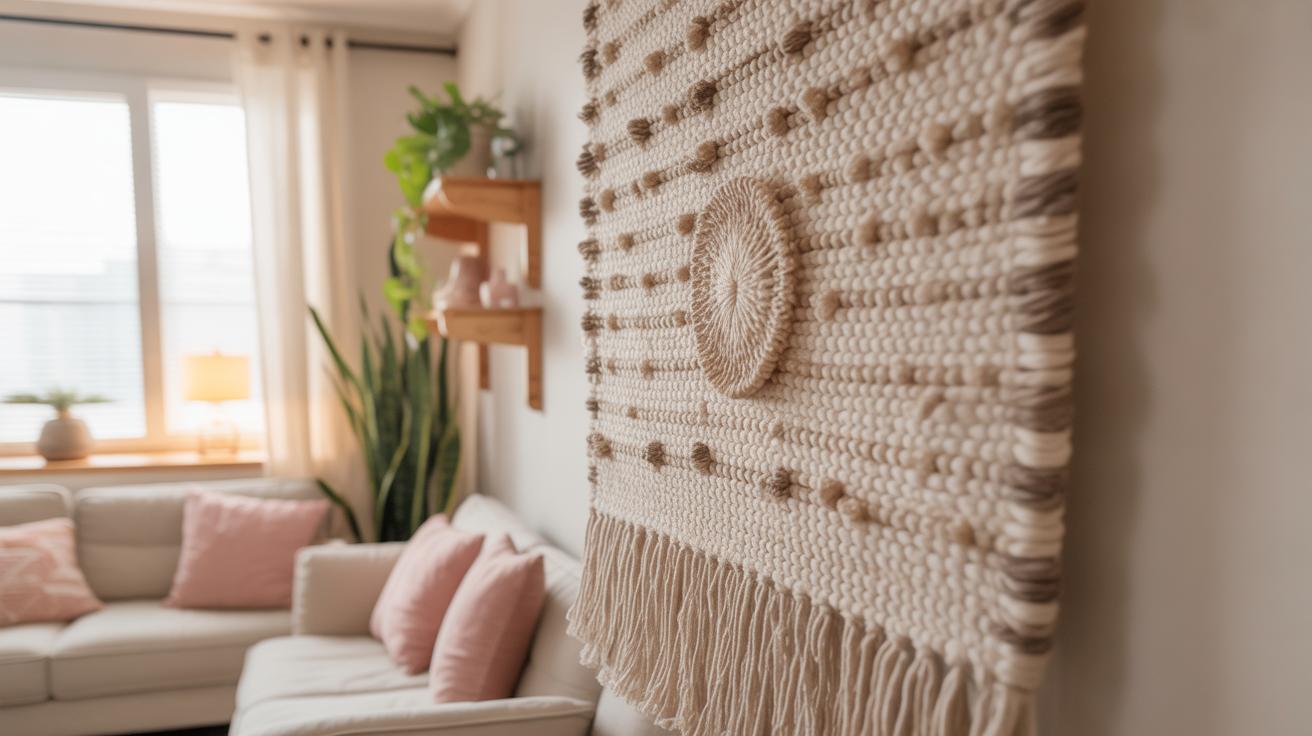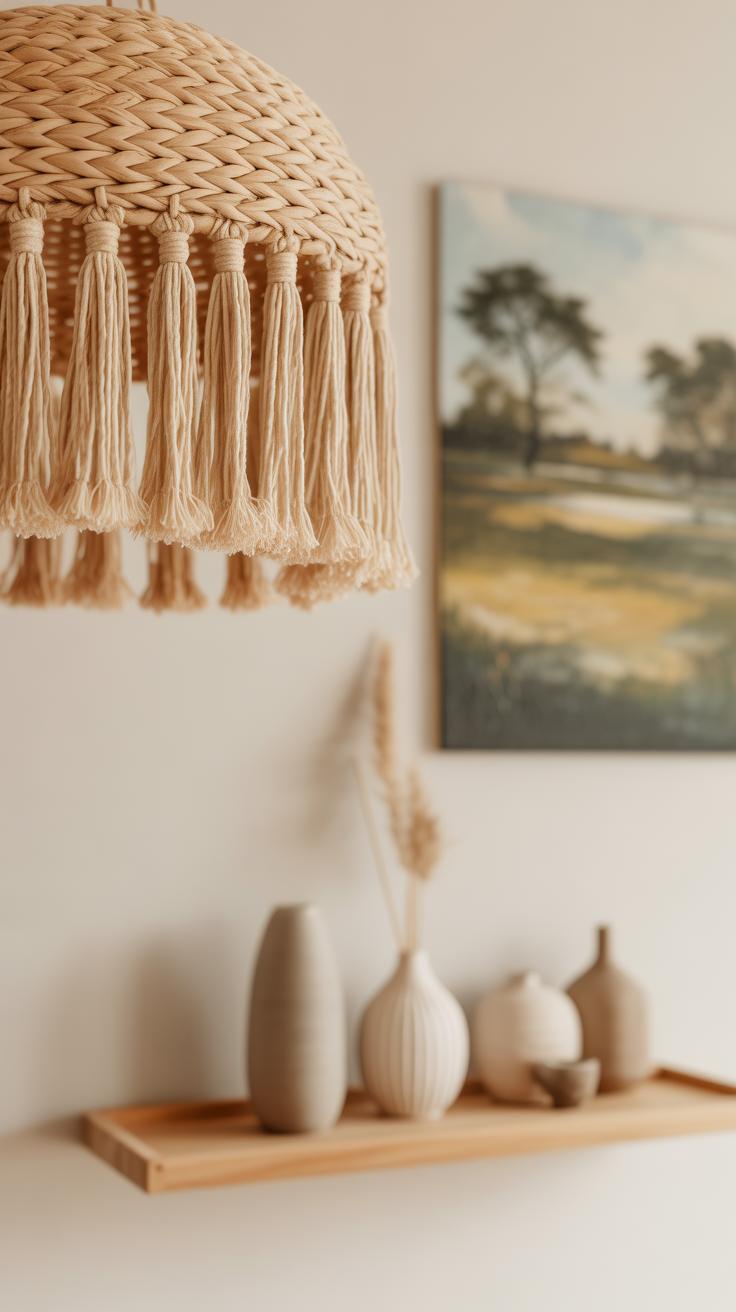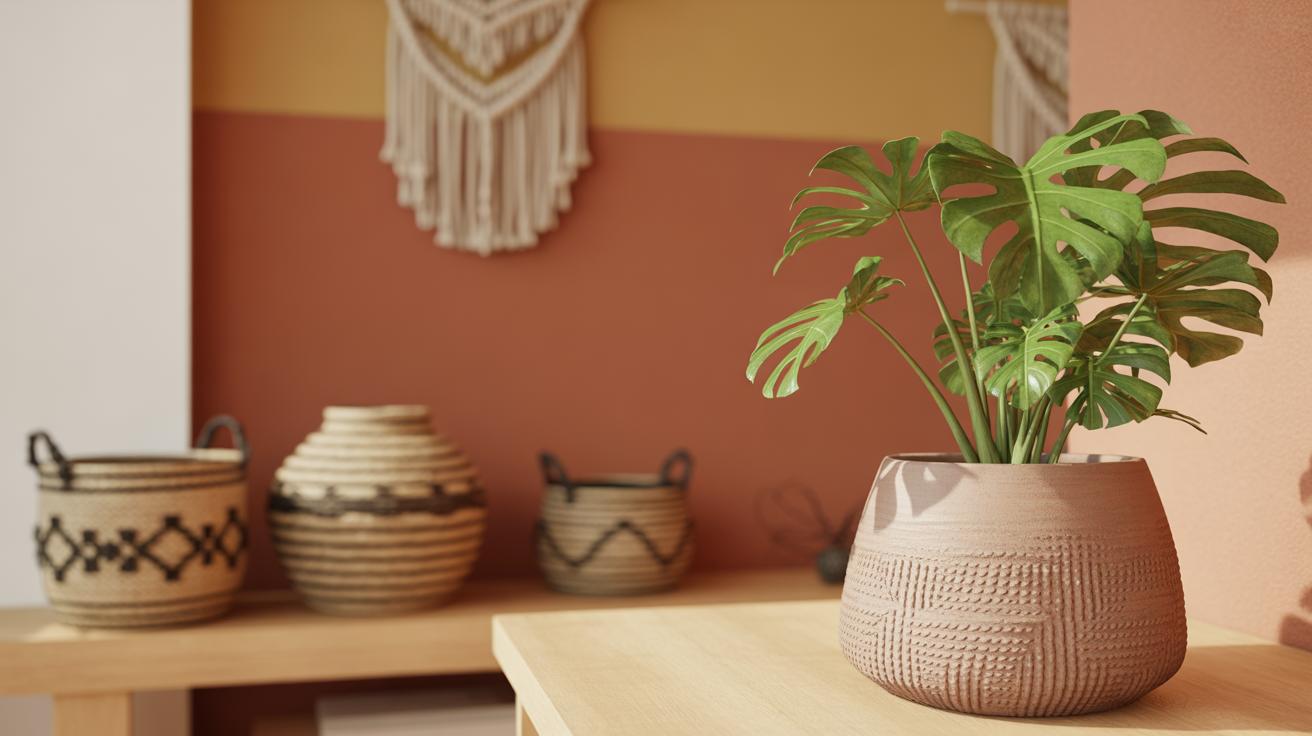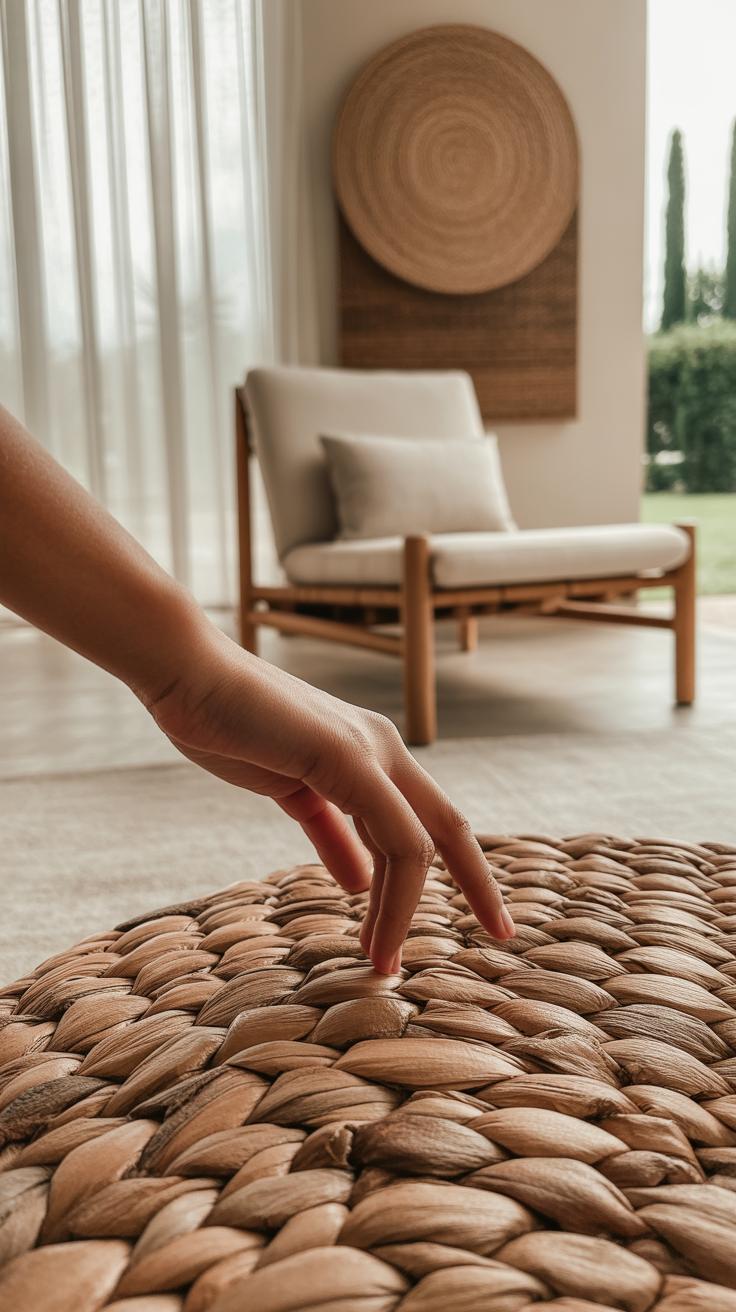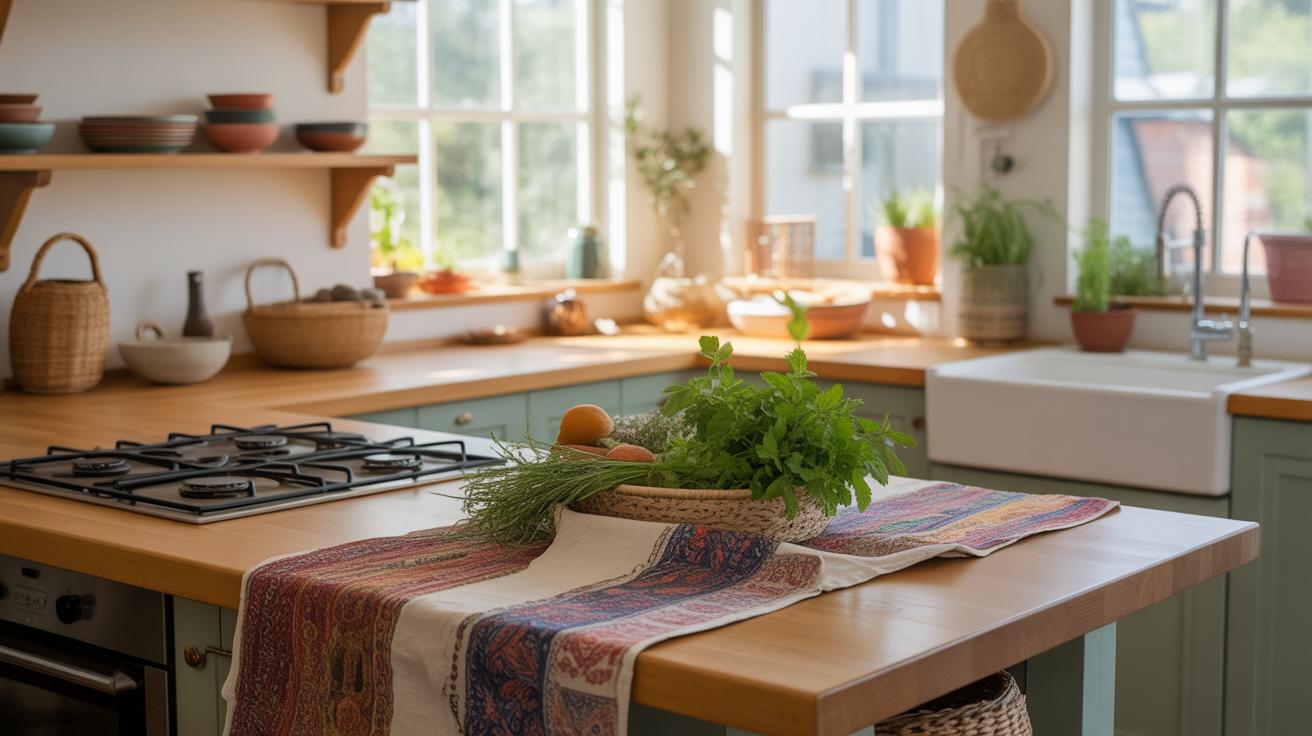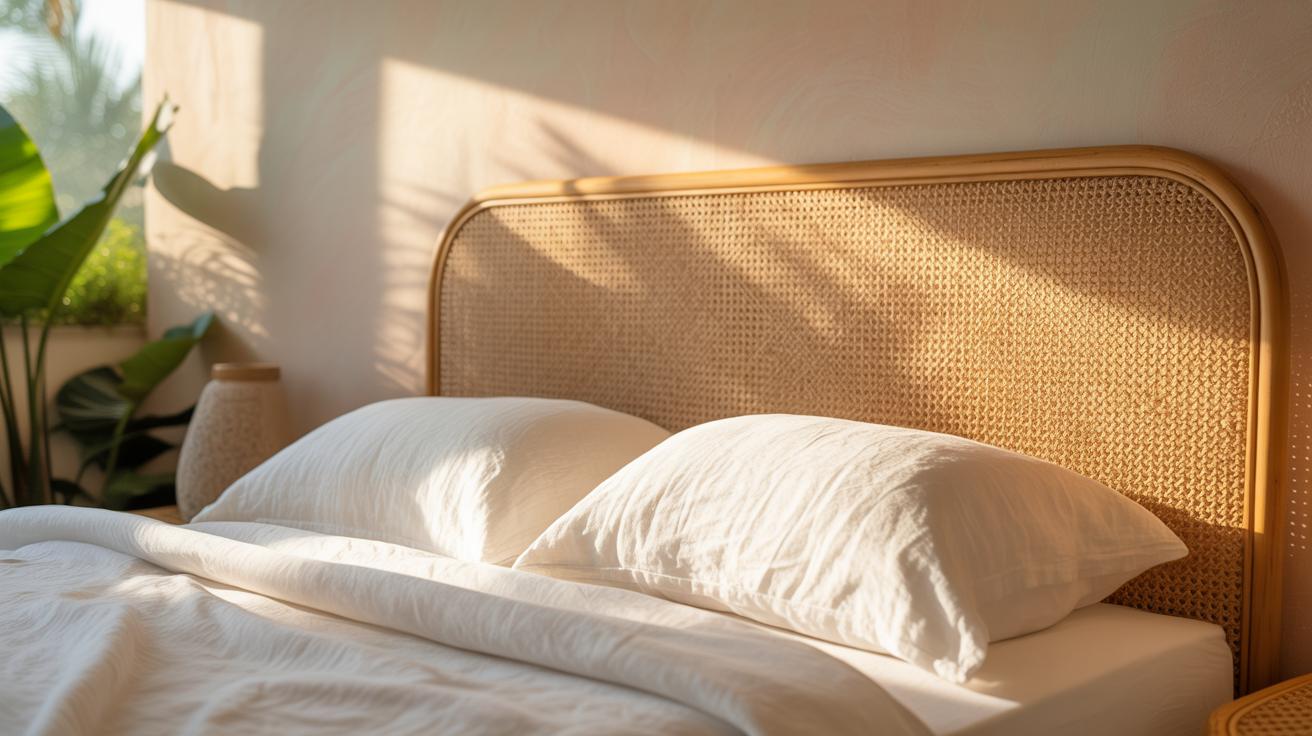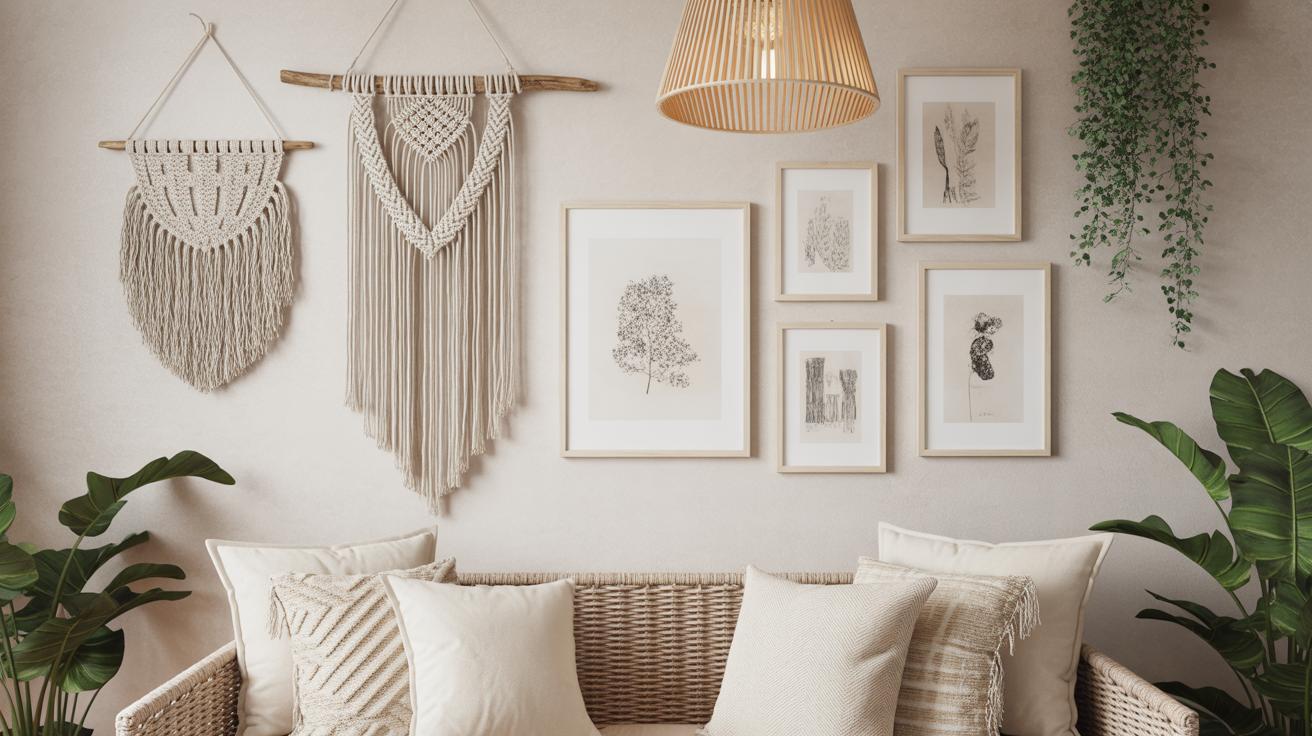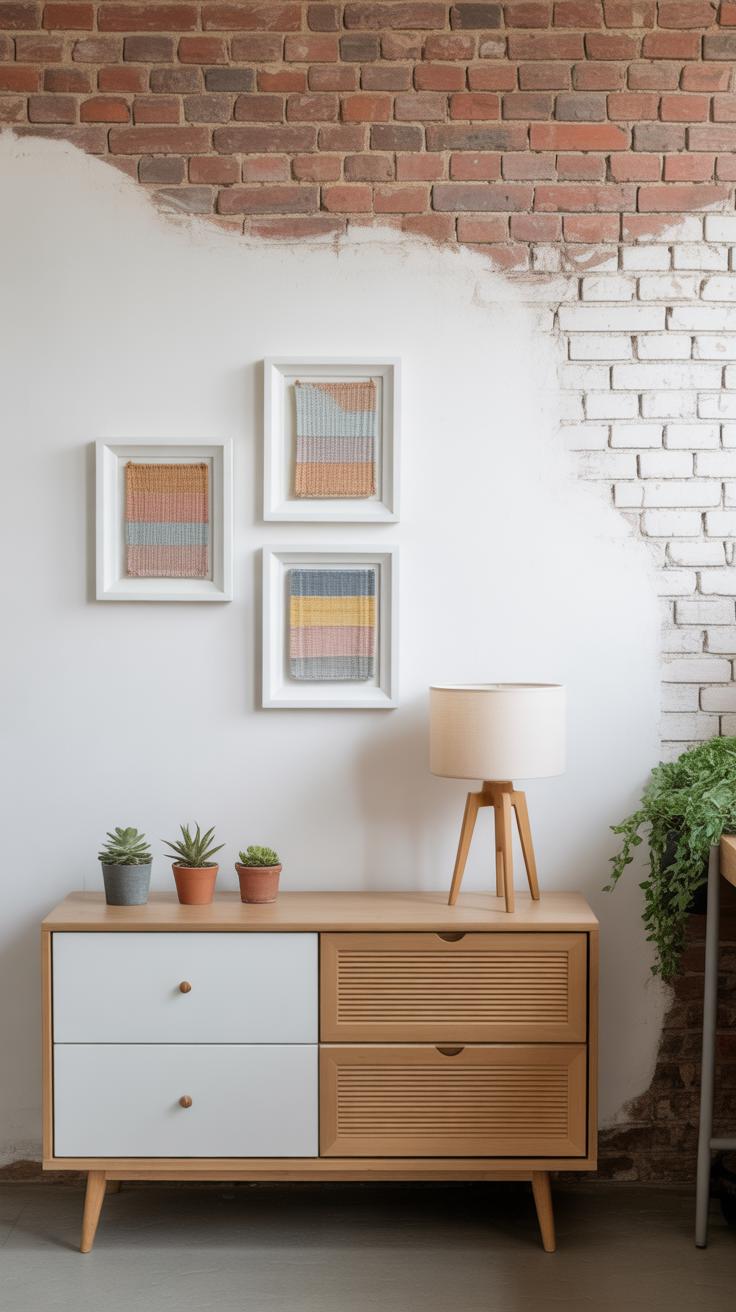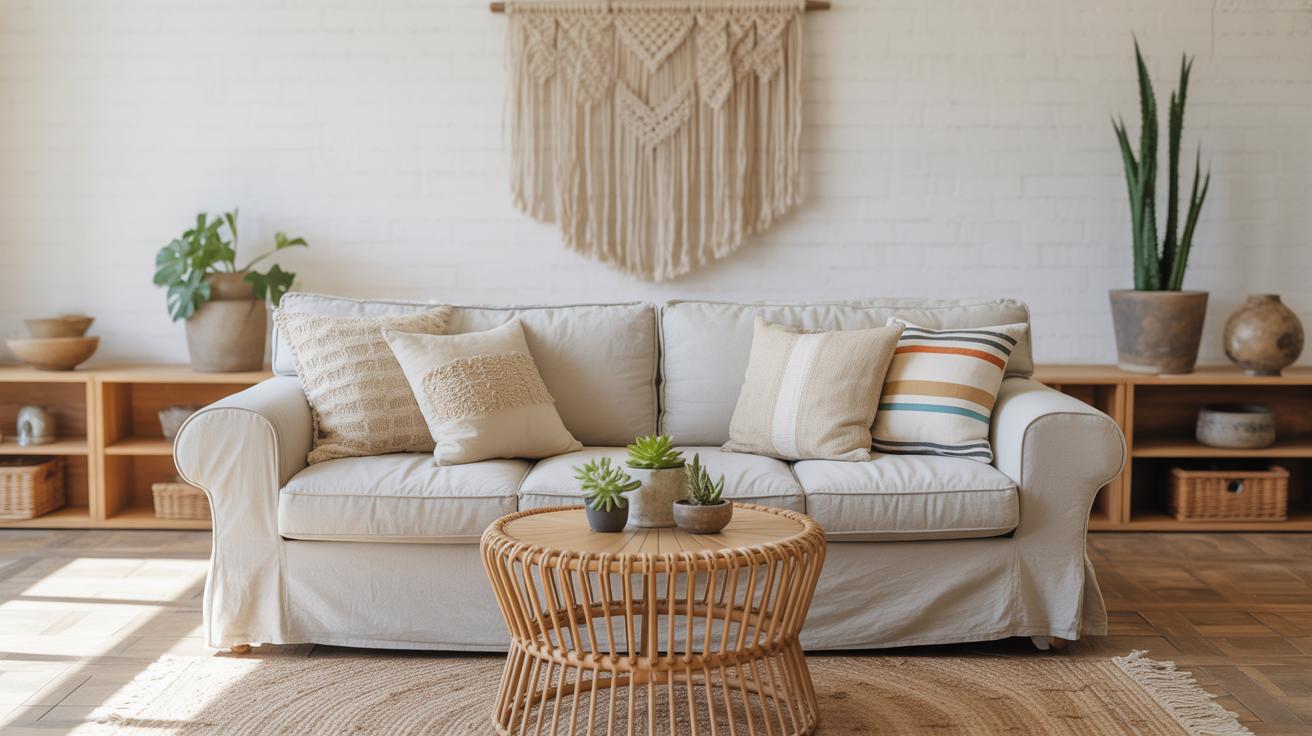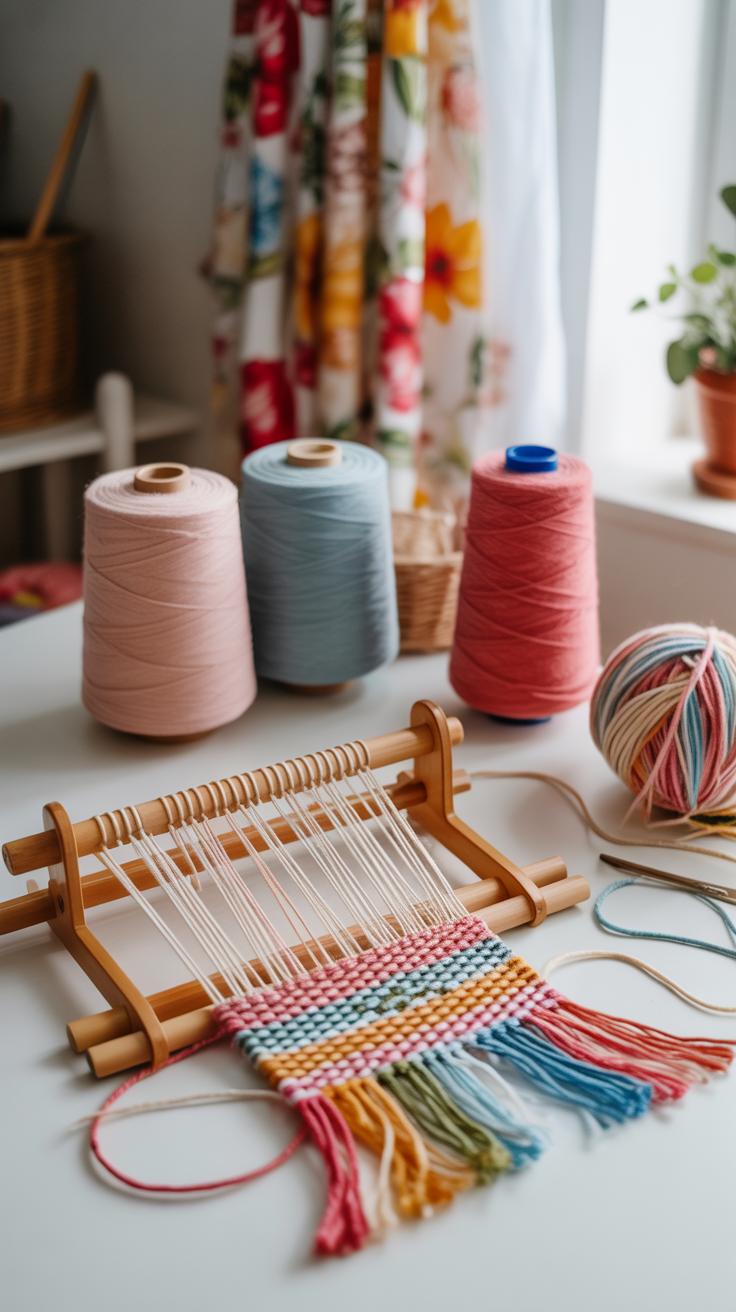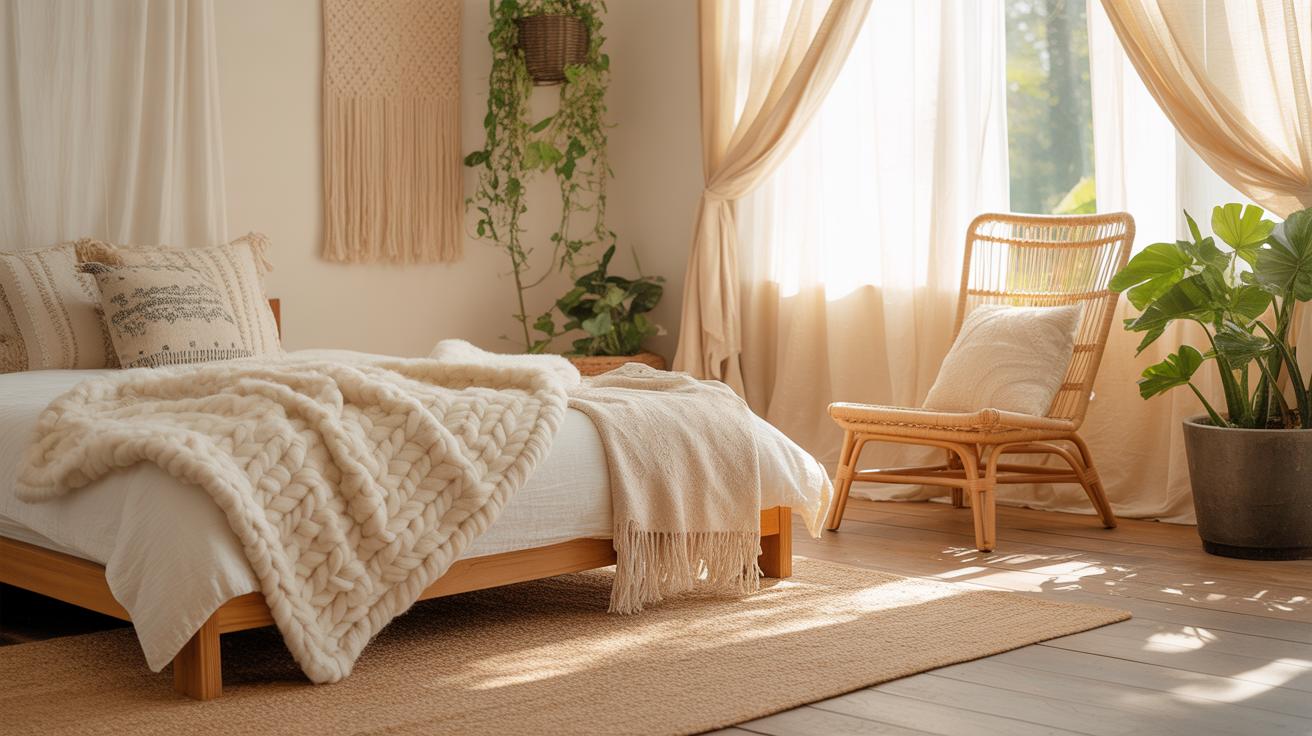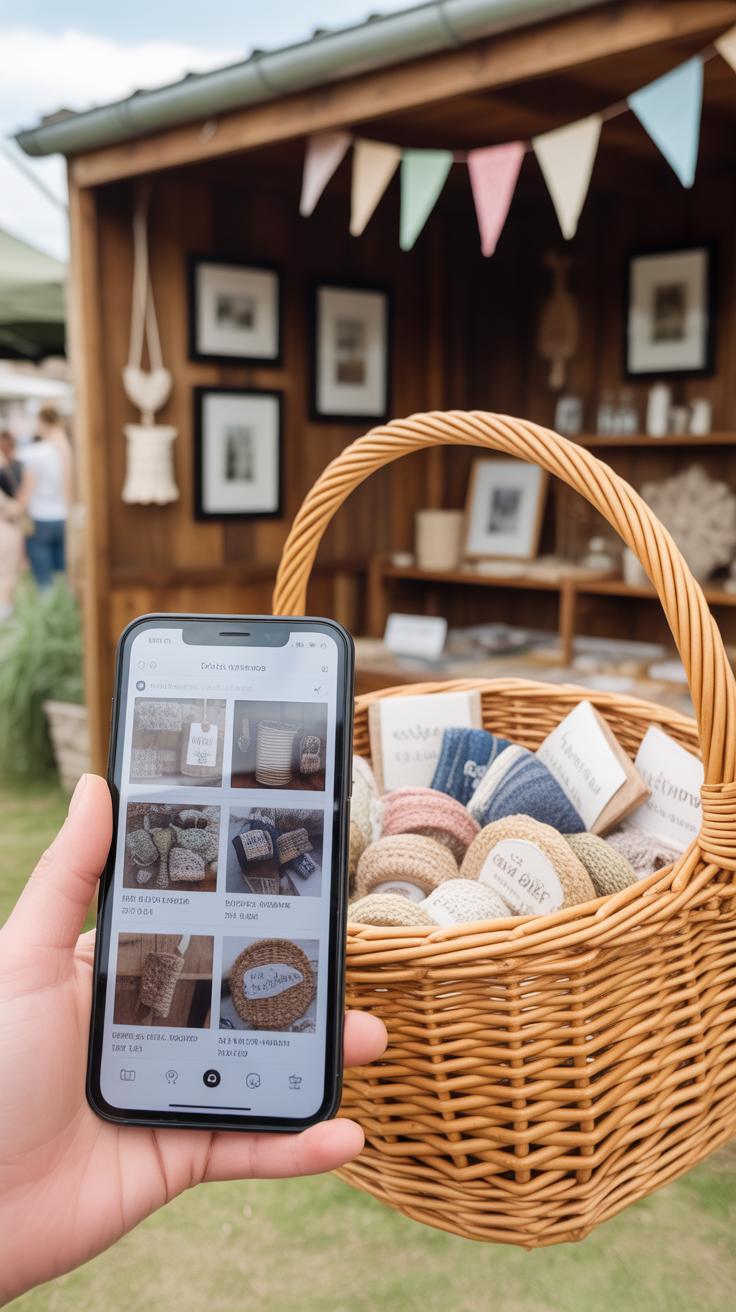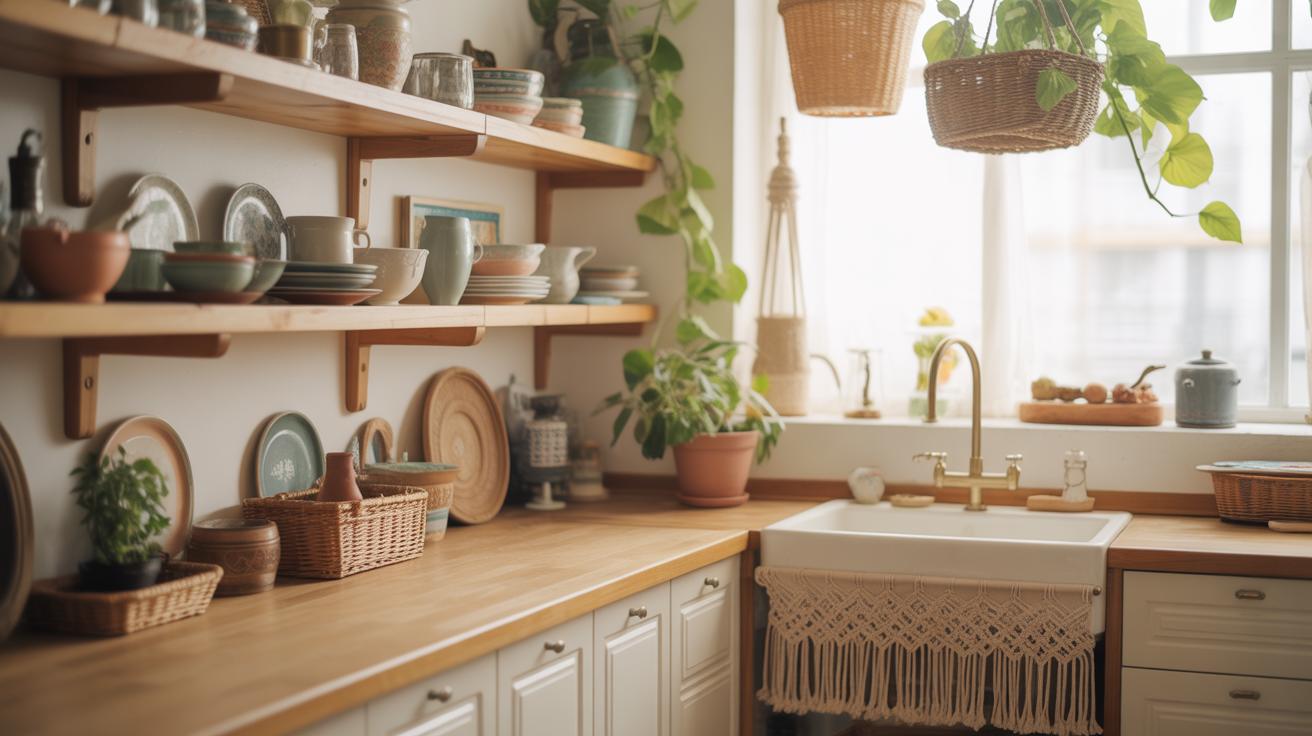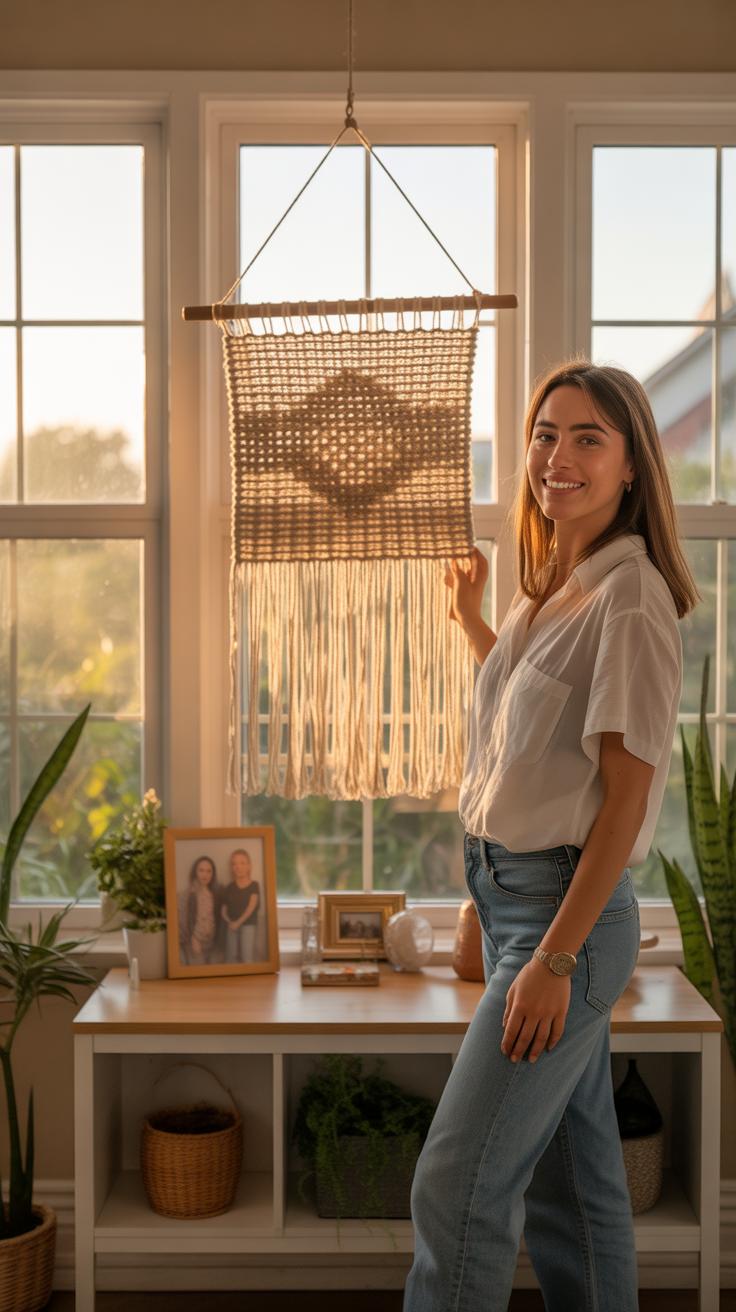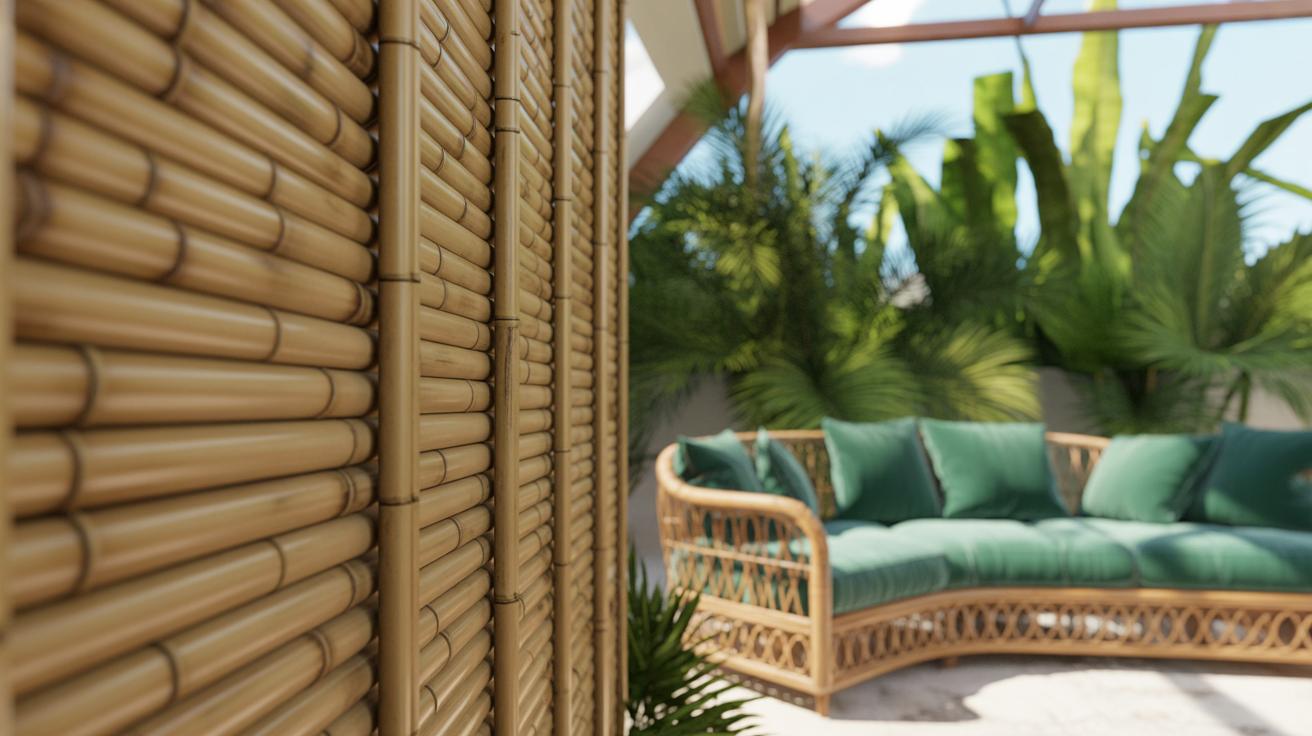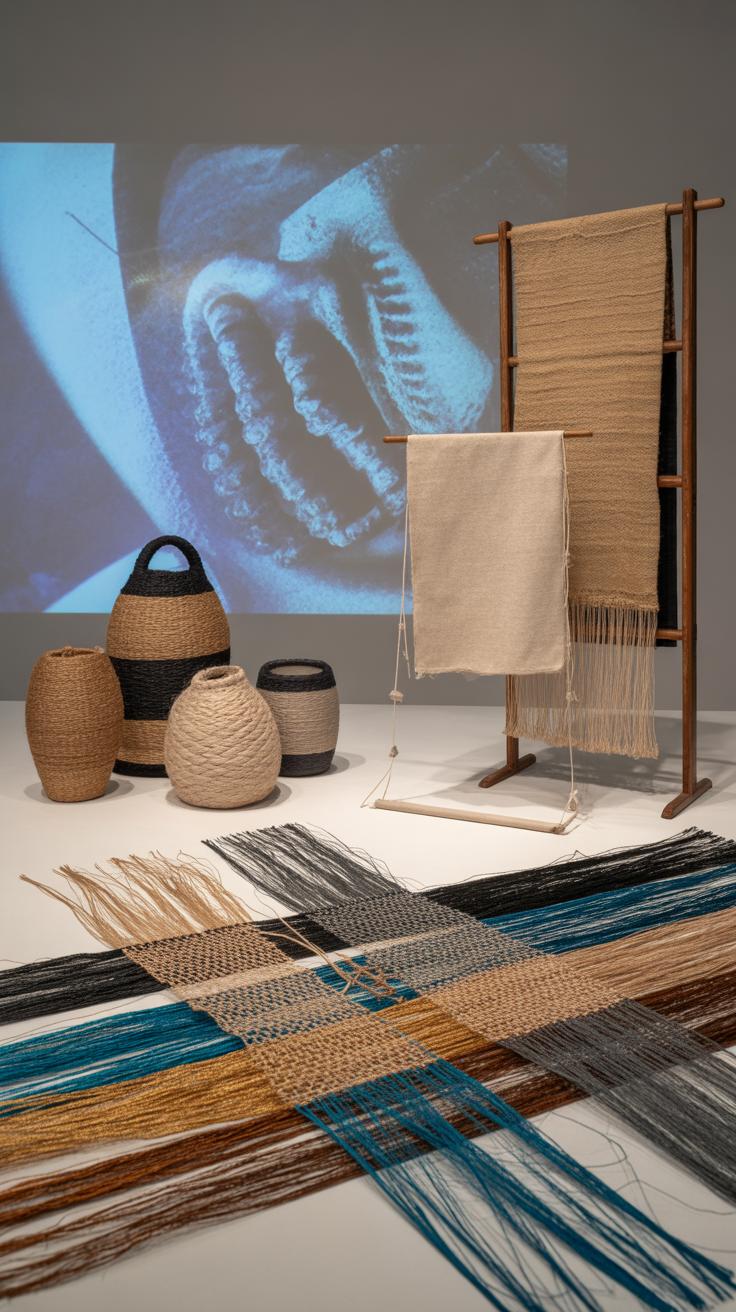Introduction
Stunning woven wall art pieces have become a popular choice for adding texture and personality to any space. These pieces bring a warm and organic feel, combining craftsmanship and design to enhance your walls. You don’t need to rely on plain paint or flat pictures to decorate your home anymore.
In this article, you will explore what woven wall art is, how it can change the look of your rooms, and practical tips on choosing and placing these beautiful decorations. Let’s look deeper into creating a textured and inviting environment with woven art.
Benefits of Adding Texture with Woven Wall Art
When you think about decorating walls, color often takes the spotlight. But texture—that subtle, tactile quality—can change a space in ways color alone cannot. Woven wall art brings this texture to your walls, giving them a sense of depth and warmth that flat paint or prints can’t replicate.
Texture creates a physical dimension you can almost feel with your eyes. It can make a room appear cozier or more inviting without overwhelming the senses. If your space feels a bit sterile or too smooth, woven pieces break that monotony subtly. They catch light differently throughout the day, shifting shadows and highlights in a way that adds quiet drama.
Think about it: when you walk into a room with a handful of textured elements, your eyes linger a little longer. The weaving invites curiosity—how was this done? What does it feel like? That interaction can make your space more engaging. Texture, through woven art, connects the visual to the tactile, even if you never touch it.
- Woven art softens sharp edges in minimalist rooms by adding visual interest
- It brings natural fibers inside, which connects indoor spaces to the outdoors
- Texture from weaving can balance glossy or metallic surfaces, preventing coldness
- Unlike paintings, woven pieces aren’t just visual—they evoke a sensory response
Some might think texture is just an afterthought, but it shapes how we experience space. Would your living room feel the same without that rich, handwoven wall hanging? Probably not. So, bringing woven wall art into your home means adding layers—layers your eyes and mind can appreciate, but also layers that create comfort without saying a word.
Adding Woven Wall Art Texture
Woven wall art brings a unique kind of texture that few other wall decorations can offer. When you look at a flat painted wall, it’s just that—flat. But a woven piece introduces layers, depth, and a sense of dimension that makes the surface feel alive. Texture isn’t just about looks; it changes how you perceive a room entirely.
Think about texture as the quiet background voice of your space. It interacts with light and shadow, casting subtle variations that break monotony. This can soften harsh lines or, in some cases, add contrast to smooth finishes. Maybe you’ve noticed how a rough woven piece next to sleek furniture suddenly makes everything feel more balanced. Or maybe you haven’t, but it really does.
Texture matters because it adds interest without overwhelming. It can anchor an otherwise plain wall or complement bold patterns. And woven materials do this in a way that feels natural—almost organic, if that makes sense—to your eyes and senses.
Visual Appeal of Textured Walls
Textured walls influence a room’s look far more than you might expect. They catch your eye, but not in a flashy way. Instead, they invite you to look closer, to notice details and subtle changes from different angles. Rooms with textured walls usually feel more inviting. It’s as if the space becomes friendlier, less sterile.
Woven wall art can really break up visual sameness. For example, in a minimalist room, a textured woven piece can serve as the focal point exactly because it’s different from smooth, plain surfaces. It adds personality without overloading the senses. On the other hand, rooms with lots of patterns might benefit from woven art to introduce a calming textural pause.
Texture also gives a sense of life to the space. The walls stop feeling like mere boundaries and instead become part of the overall atmosphere. This kind of effect might seem slight at first but often shapes how you experience the room in the long run.
Tactile Experience and Warmth
Woven materials have this sensory quality that’s hard to describe purely in words. There’s a warmth, almost a softness to them, even if they’re not literally soft to the touch. They create an inviting atmosphere that makes you want to stay longer. Maybe it’s the natural fibers or the hand-crafted feel, but there’s a comfort woven into every thread.
Touching a woven art piece is a different kind of interaction than running your hand over a painted wall. The raised textures engage your sense of touch, making the wall feel less distant, more connected to the room’s action. Even if you don’t physically touch it, there’s a psychological closeness that can’t be ignored.
I’ve noticed that rooms with woven wall art often feel warmer, especially in cooler seasons. It’s not just temperature-related warmth; it’s an emotional response–a sense of being embraced by the space. Maybe it’s subtle, but it’s there, and it tends to encourage relaxation.
Choosing the Right Woven Wall Art for Your Space
Picking woven wall art feels like a small decision, but it can completely change a room’s vibe. When choosing, start by thinking about the style and function of your space. For example, a formal dining room might call for something more structured and minimal, maybe a geometric pattern in neutral tones. Meanwhile, a cozy living room or a child’s room could welcome more playful textures or vibrant colors. It depends on what mood you want the room to convey and how the wall art plays into that.
Considering Room Size and Layout
Room size really influences what will work. In a small space, going for a huge woven piece might feel overwhelming or cramped, making the whole room seem smaller. Sometimes, a series of smaller pieces arranged thoughtfully can add interest without crowding. Larger rooms can handle bold, oversized art that acts like a focal point—but only if the layout allows it. For instance, a wide empty wall near a fireplace or above a sofa is usually prime real estate. Oddly shaped rooms might benefit from asymmetrical or multi-panel art to complement the flow.
Matching Colors and Themes
When it comes to color and patterns, try to balance cohesiveness with a bit of contrast. Woven art with similar hues to your existing decor will blend smoothly. But adding a hint of an unexpected color can refresh the palette—you might notice a deep rust tone in your throw pillows reflected subtly in your wall art. For patterned spaces, simpler woven textures can calm the chaos, while monochrome rooms might gain energy from bold, patterned weavings. Don’t feel boxed in by exact matches; a little tension in pattern or color can be interesting, though it’s tricky to get just right.
Honestly, sometimes you just have to trust your eye—or rearrange things a few times until it feels right. Have you ever stood back and thought, “Maybe this isn’t quite working,” only to discover the right spot or combination a day later? That’s part of the process.
How to Hang and Care for Woven Wall Art
Woven wall art needs a bit more attention than your usual framed print, mostly because of its texture and weight. When hanging, it’s crucial to secure your piece properly to avoid sagging or damage. You might try sturdy adhesive hooks for lightweight weavings, but thicker, heavier pieces usually need a solid support—think metal rods threaded through the weaving’s top or custom frames designed to hold fabric without pinching it. Some artists include a hanging sleeve on the back, which makes using a wooden dowel or slim rod easier. These methods help the piece hang evenly and prevent distortion over time.
Once it’s up, caring for woven art is another matter. Dusting regularly with a soft brush or a vacuum on a low setting works well. Spot cleaning is delicate—mild soap and water, applied gently to the area, usually does the trick if needed. But be cautious, as some materials don’t react well to moisture. If your wall art is in a sunny spot, fading might sneak in, so rotating the piece occasionally or moving it away from direct light can help preserve its color. Ever wondered if you should store woven art in plastic? Probably not ideal. Airflow matters to keep the fibers in good shape. Storing in breathable cotton bags or wrapping in acid-free tissue paper is better.
It’s a bit of back-and-forth between protecting and displaying your piece, really—less exposure to dust means less cleaning, but exposure to light helps it look lively. Sometimes I’ve found myself debating where to place a piece, just to balance those factors. What spots in your home could handle a little less sunlight but still get noticed? That might be the sweet spot for your woven art.
Incorporating Woven Art into Different Decor Styles
Woven Art in Modern and Minimalist Homes
When it comes to modern or minimalist interiors, woven wall art works best when it’s simple and restrained. Think clean shapes, neutral colors, and subtle textures that don’t compete with the calm you’re aiming for. A small woven piece with straight lines or a monochrome palette can add just enough warmth without cluttering the space. It’s interesting—sometimes less really is more. You might have thought woven art is too intricate or busy for these styles, but a carefully chosen piece can actually highlight the architecture or furniture.
Try placing a compact woven piece on a white or gray wall to create a soft focal point. You’ll notice how the texture gently breaks up the flatness without overwhelming your setup. If you want to take it a bit further, layering a few thin woven panels vertically can add subtle depth. But be cautious; too many can turn minimalist efforts upside down. Experiment with it, and you might find that just one well-placed woven element changes the entire room’s mood.
Bohemian and Rustic Settings
In bohemian or rustic rooms, woven wall art takes on a different role. Here, richer textures and earthy or vibrant colors work beautifully. Think of natural fibers, looped yarns, or even some fringe—these pieces feel cozy, lived-in, and a little wild. They mix naturally with the eclectic furniture and handmade items you’re likely to find in these settings.
For instance, a wall full of various woven pieces in warm tones adds layers to boho rooms, matching the casual, collected-over-time vibe. In rustic spaces, woven art with natural hues, maybe some hints of rougher weaving, complements wooden beams or stone walls. You might wonder if it becomes too much texture? Sometimes it does, but that’s part of the charm here. Plus, playing with different sizes and patterns keeps it from feeling flat.
Have you ever noticed how a textured wall hanging can almost ground a bohemian space, making it feel more intentional? It’s a balance but definitely one worth exploring if you want your design to feel authentic rather than staged.
DIY Woven Wall Art Projects
Trying your hand at woven wall art can feel surprisingly rewarding. You don’t have to be an expert to create pieces that bring new texture and life to your space. In fact, starting with simple projects often leads to the most satisfying results—you get to see progress quickly, and that might just keep you going.
Simple Weaving for Beginners
One of the easiest ways to begin is by using a basic loom or even a piece of cardboard. You can cut slits in the cardboard and wrap yarn back and forth to create a frame for your weaving. Small wall hangings work well here, especially if you want to test out colors and basic patterns without committing to a large piece.
Try weaving in straight lines first. Once you feel comfortable, experiment with looping or knotting. It’s okay if some strands look uneven or if the design isn’t perfectly symmetrical—those little quirks add character. I remember my first piece looking oddly lopsided, but it found a spot in my living room anyway.
Adding Personal Touches
What makes woven art truly yours often lies in those small details. You can mix different yarn textures to make the piece feel more layered and tactile. For example:
- Incorporate beads or small wooden accents into the weave for some unexpected contrast.
- Use colors that speak to you or match a mood; maybe some soft pastels or bold, vibrant hues.
- Try varying thicknesses of yarn—that way, the texture plays even more with light and shadow on your wall.
It’s interesting to think about how something as simple as switching colors or adding a few beads can shift the entire vibe of your piece. And maybe, that’s why DIY woven art feels so personal—it’s a slow, tactile process that invites reflection on your tastes and what you want your space to say.
Where to Buy Stunning Woven Wall Art
Supporting Local Artists
There’s something special about owning a piece made by someone nearby, isn’t there? When you buy woven wall art from local artisans, you support their craft and nurture your community’s creative spirit. Plus, these pieces often carry stories or cultural significance that you won’t find in mass-produced items. Finding local artists might take a bit of looking around—try visiting neighborhood galleries, craft fairs, or art markets. Sometimes, even small cafes or boutiques showcase local creators. You might stumble upon unique textures and styles that aren’t online anywhere.
While local works often come with a higher price tag, it feels more like an investment in art with soul. And if you’re lucky, you can meet the artist in person, learn about their techniques, or even request a custom piece. There’s a closeness to the process that you rarely get when shopping elsewhere.
Online Marketplaces and Stores
Shopping online for woven wall art is convenient, sure, but the sheer options can be overwhelming. Sites like Etsy are popular because they bring together individual artisans globally, so you get a range from traditional weaves to modern interpretations. If you want something specific, reading reviews and checking seller ratings helps weed out less serious shops. Sometimes, photos don’t fully capture the texture or true colors, so be prepared to guess a little.
Besides Etsy, there are niche online stores focused solely on woven art or handmade home décor. These places usually curate their offerings, so quality might be more consistent. A quick tip: look for shops that share detailed product descriptions and stories about the creators. It can tell you a lot about their commitment. Still, remember that shipping costs and wait times can vary widely, especially if you’re buying internationally.
Whether local or online, where you buy woven wall art shapes your connection to it. Have you ever bought something and then wished you’d known more about the artist or materials? It’s tricky, but with a little patience, you can find pieces that feel right for your space and your values.
Personal Stories of Using Woven Wall Art
Small Room Transformation
One person I know had a tiny bedroom that always felt cramped and a bit dull. They added a large woven wall hanging above the bed, and it made a surprising difference. The texture and natural fibers broke up the flatness of the walls, creating depth without overwhelming the space. Suddenly, the room didn’t feel so small or closed in anymore. It was like the woven piece gave the room a breath of fresh air, yet stayed cozy and grounded. It’s odd, isn’t it, how something purely decorative can affect how you *feel* in a space?
They mentioned that it even shifted their mood—making the room feel more inviting and less like a box. The woven art wasn’t just hanging there; it actually changed their sense of space and comfort.
Creating Cozy Corners
A friend of mine set up a reading nook in a neglected corner of their living room. The spot was perfect for curling up but always felt a little cold. Adding a smaller woven wall piece above the chair brought in a warmth that no lamp or rug could achieve alone. The textures made the area feel lived-in, personal, and just a bit special.
It’s funny—adding that one piece changed how often they used the nook. It wasn’t just decoration; it encouraged them to slow down, linger, and enjoy the space. The woven art personalized the corner, making it feel like a secret retreat rather than just another empty corner of the room.
Trends and Future of Woven Wall Art
Woven wall art is shifting in interesting ways, reflecting broader design moods and material innovations. Lately, there’s been a subtle move toward more minimalist designs—clean lines combined with natural textures. You might find that simpler, more graphic patterns feel fresh, especially when paired with muted or earthy tones. But at the same time, bold colors and intricate patterns haven’t vanished. It’s almost like these styles coexist, each appealing to different tastes.
Materials are also evolving, with many artists turning to sustainable fibers like organic cotton, hemp, or even recycled yarns. This trend isn’t just about ethics—it adds a unique feel and visual interest because these natural materials age and wear in unexpected ways. Some pieces might look a bit rougher around the edges, but that imperfection brings character.
Technology is creeping into woven art, too. Digital looms and computer-assisted designs allow complicated patterns that would’ve taken weeks by hand—now they happen faster, maybe even mixed with hand-finished touches. But I wonder if too much tech could make these pieces feel less personal, less handmade. Still, mixing old and new methods seems promising.
- Minimalist patterns paired with natural, soft palettes are growing in appeal.
- Sustainable fibers like hemp and recycled materials are influencing design choices.
- Digital weaving techniques allow complex patterns but might change the craft’s feel.
Looking ahead, I suspect woven wall art will balance between tradition and technology, with more emphasis on eco-consciousness. Will this keep its tactile charm? That’s up to the artists and buyers alike.
Conclusions
Woven wall art can give your home a unique and tactile detail that few other decorations offer. It adds depth and warmth, making your spaces feel complete and cared for. By understanding the styles and how to place these pieces, you can transform ordinary walls into feature points of your rooms.
Consider your room’s style, colors, and lighting when picking woven art. Experiment with size, shape, and material to find pieces that speak to you. Your walls are a canvas ready to show your personality with the touch of woven artistry.

